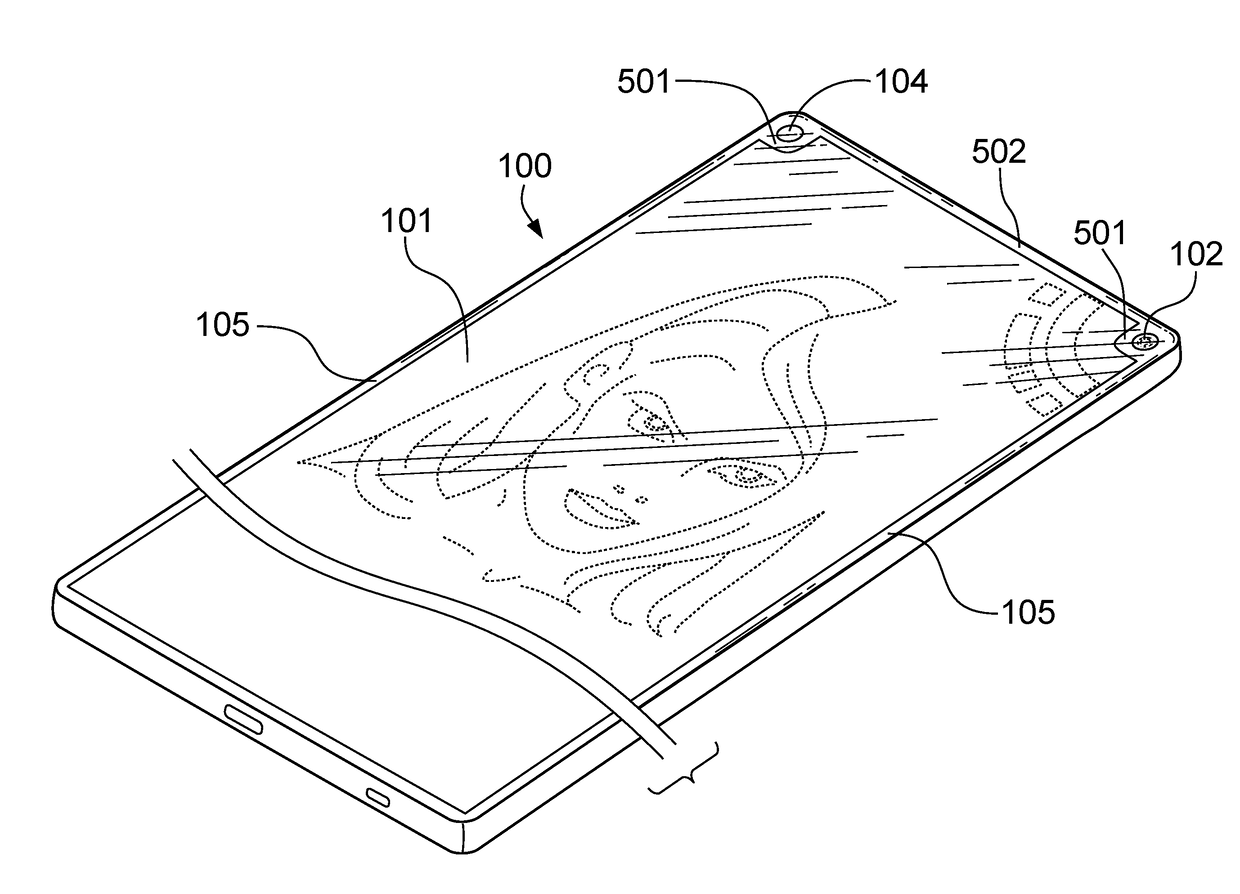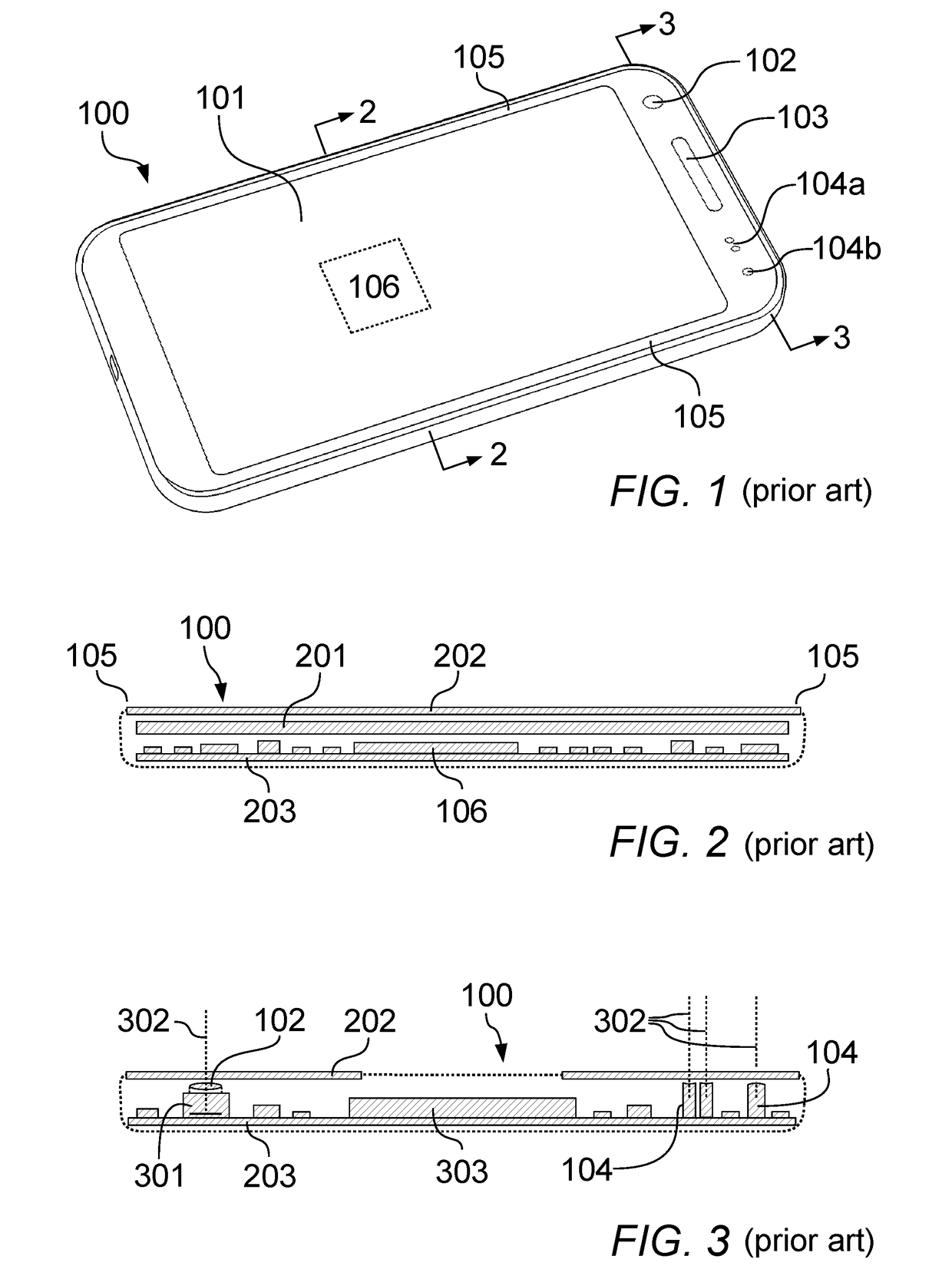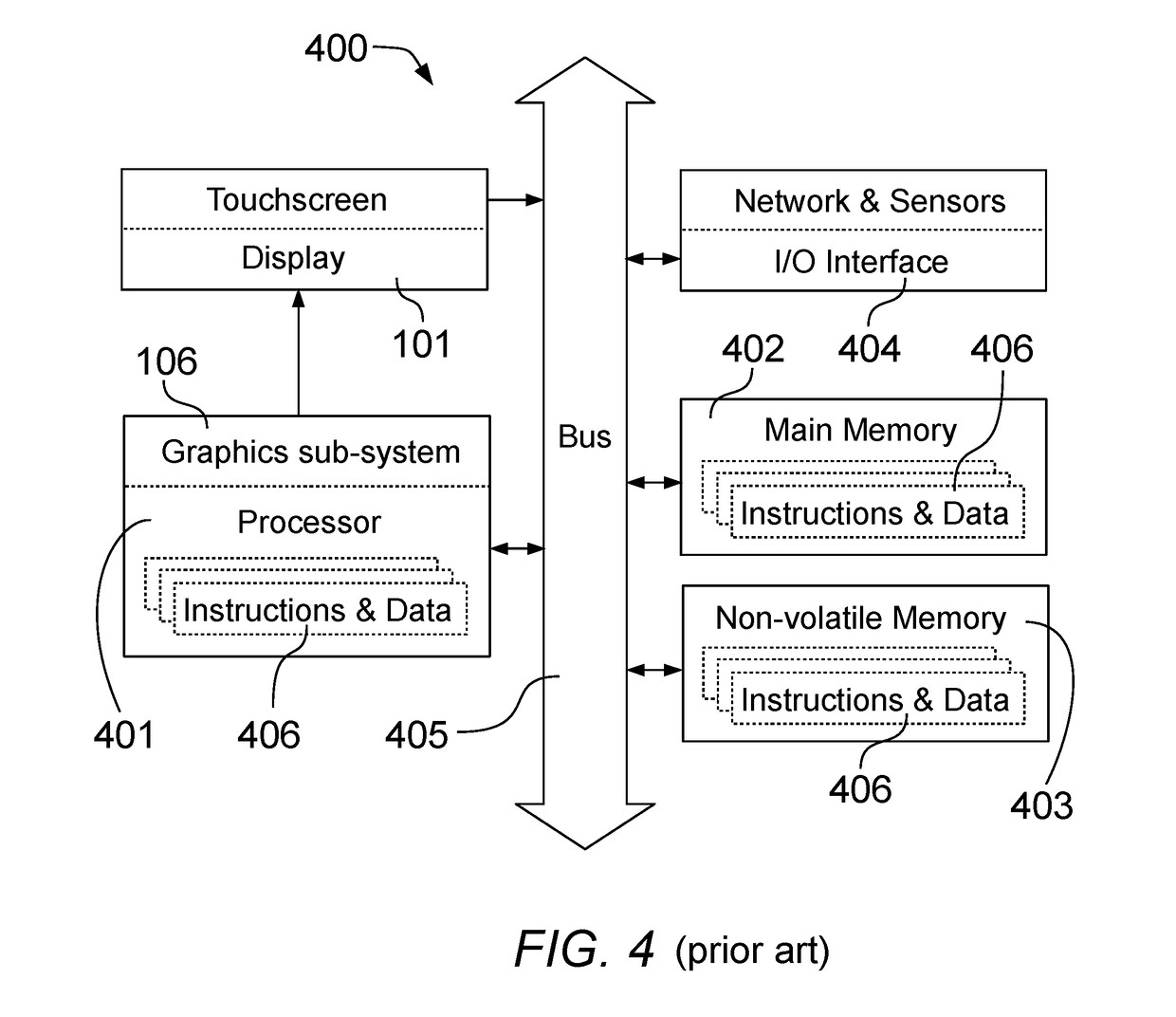Smartphone with front camera and maximized display screen
a front-facing camera and display screen technology, applied in the field of smart phones, can solve the problems of reducing the light sensitivity of the front-facing camera located beneath the display screen, clouding the resultant picture, and limiting the transmission efficiency of unpolarized light, so as to maximize the remaining screen area
- Summary
- Abstract
- Description
- Claims
- Application Information
AI Technical Summary
Benefits of technology
Problems solved by technology
Method used
Image
Examples
Embodiment Construction
[0046]FIG. 1 (labeled “prior art”) shows a conventional smartphone 100 as an example of a mobile electronic device. The drawing illustrates a display screen 101 with touchscreen functionality, the lens 102 of a front-facing camera, an earpiece 103 (ear speaker for telephone calls), and optical sensors and / or emitters 104. An optical sensor 104a may be, for instance, a combined proximity and light sensor and an optical emitter 104b may be, for instance, a flash LED or an infrared (IR) LED to illuminate the face of the user. Alternatively, the optical emitter 104b may be a status LED that indicates operating states, such as “on / off” or “charging battery.” A graphics sub-system 106 (integrated into the smartphone 100 and shown in dotted lines in FIG. 1) is responsible for generating the screen content displayed on the display screen 101.
[0047]As can be seen in FIG. 1, conventional smartphones 100 typically feature a thin border 105 at the left and right edge of the display screen 101. ...
PUM
 Login to View More
Login to View More Abstract
Description
Claims
Application Information
 Login to View More
Login to View More - R&D
- Intellectual Property
- Life Sciences
- Materials
- Tech Scout
- Unparalleled Data Quality
- Higher Quality Content
- 60% Fewer Hallucinations
Browse by: Latest US Patents, China's latest patents, Technical Efficacy Thesaurus, Application Domain, Technology Topic, Popular Technical Reports.
© 2025 PatSnap. All rights reserved.Legal|Privacy policy|Modern Slavery Act Transparency Statement|Sitemap|About US| Contact US: help@patsnap.com



